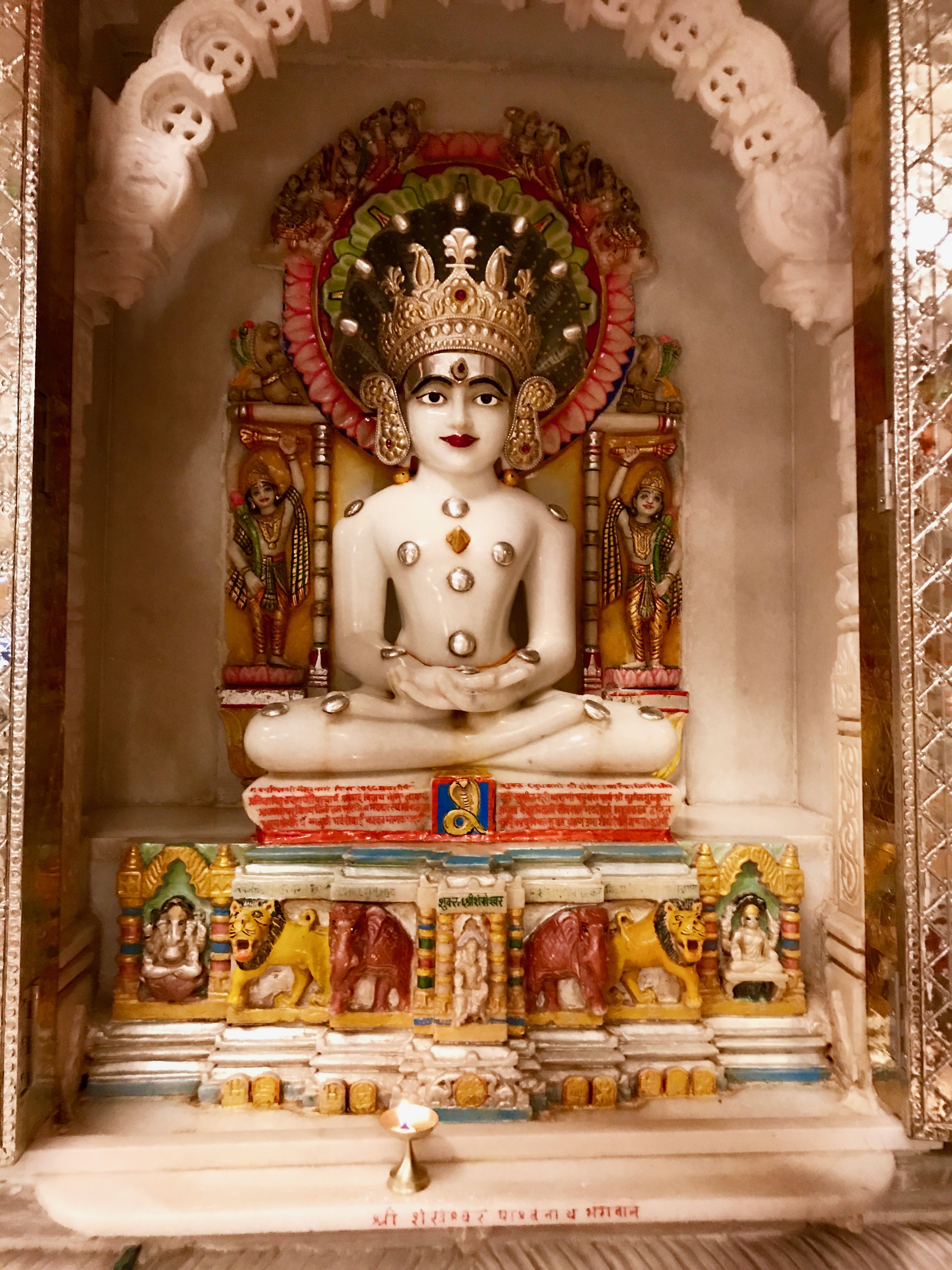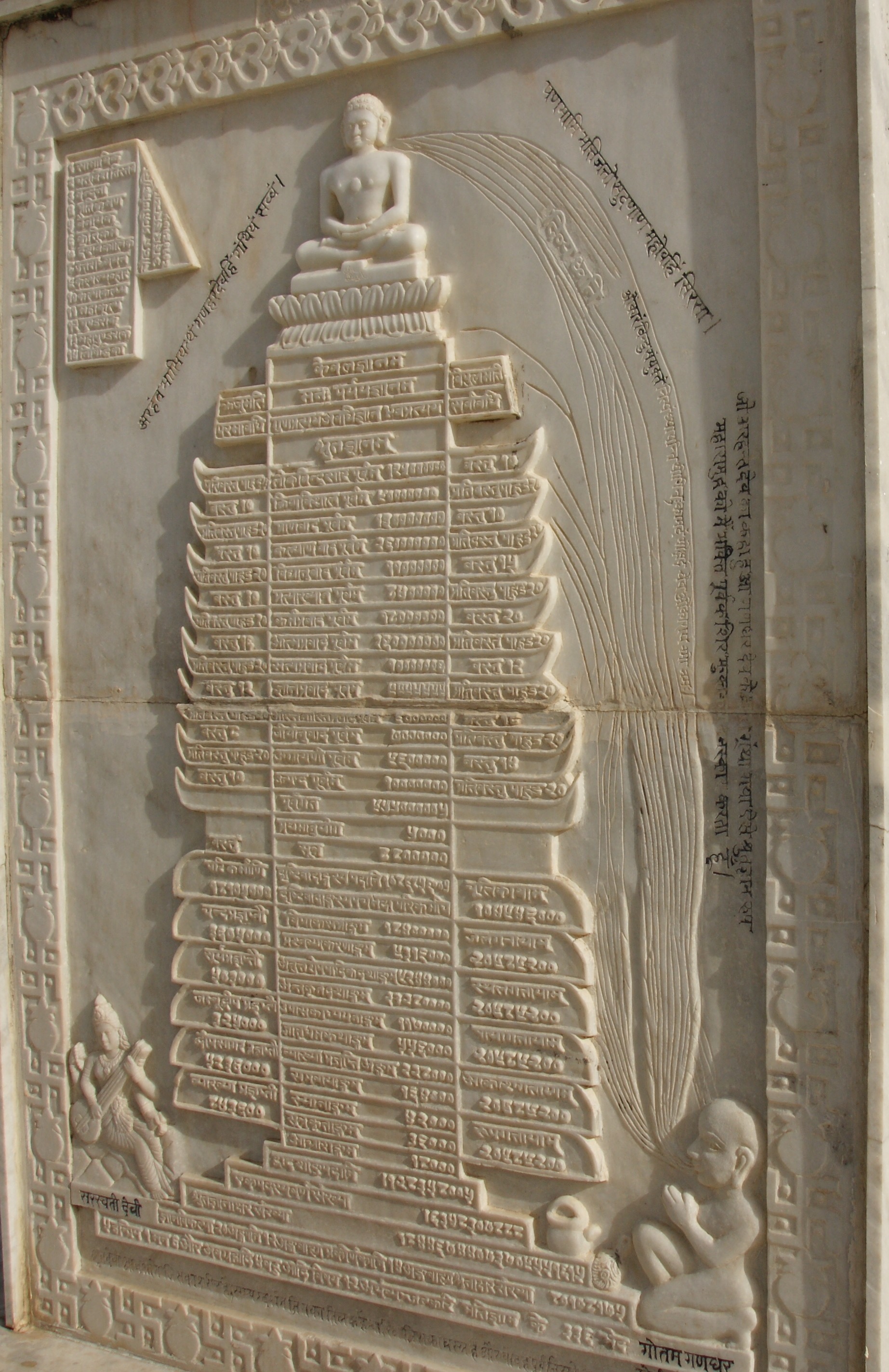|
Daulatsagarsuri
Daulatsagarsuri (1920 – 17 February 2024) was a Jainism, Jain ascetic, philosopher, and a revered saint belonging to the Śvetāmbara sect. He was the head of the monastic order (Gaccha, Gacchadhipati) of the ''"Sagar Samudaay"'' of the Tapa Gaccha''.'' While he was alive, he was the preceptor of 900 monks and nuns. He was awarded the rarest of the rare and ancient title of ''"Shri Sangh Sthavir"'' based on his austerity, knowledge of the Jain literature, canonical scriptures of Jainism, and spiritual leadership, becoming the only second of the modern Jain ascetic, Jain ascetics to have achieved this feat. Early life He was born in a Hindus, Hindu, more specifically, a Patel family in Jetpur, Navagadh, Jetpur, Gujarat. At a young age of 14, he migrated to Ahmedabad seeking employment due to poor financial condition of his family. He began working for a Jain family, Jain couple. It was during this job that he began taking interest in Jainism when he heard the Namokar Mantra ... [...More Info...] [...Related Items...] OR: [Wikipedia] [Google] [Baidu] |
Śvetāmbara
The Śvetāmbara (; also spelled Shwetambara, Shvetambara, Svetambara or Swetambara) is one of the two main branches of Jainism, the other being the Digambara. ''Śvetāmbara'' in Sanskrit means "white-clad", and refers to its ascetics' practice of wearing white clothes, which sets it apart from the ''Digambara'' or "sky-clad" Jains whose ascetic practitioners go nude. Śvetāmbaras do not believe that ascetics must practice nudity. The Śvetāmbara and Digambara traditions have had historical differences ranging from their dress code, their temples and iconography, attitude towards Jain nuns, their legends and the texts they consider as important. Śvetāmbara Jain communities are currently found mainly in Gujarat, Rajasthan and coastal regions of Maharashtra. According to Jeffery D. Long, a scholar of Hindu and Jain studies, about four-fifths of all Jains in India are Śvetāmbaras. History and lineage Śvetāmbaras consider themselves to be the original followers of Maha ... [...More Info...] [...Related Items...] OR: [Wikipedia] [Google] [Baidu] |
Jainism
Jainism ( ), also known as Jain Dharma, is an Indian religions, Indian religion whose three main pillars are nonviolence (), asceticism (), and a rejection of all simplistic and one-sided views of truth and reality (). Jainism traces its spiritual ideas and history through the succession of twenty-four , supreme preachers of ''dharma''. The first in the current time cycle is Rishabhadeva, who tradition holds lived millions of years ago; the 23rd is Parshvanatha, traditionally dated to the 9th century Common Era, BCE; and the 24th is Mahāvīra, Mahavira, who lived . Jainism is considered an eternal ''dharma'' with the guiding every time cycle of the Jain cosmology, cosmology. Central to understanding Jain philosophy is the concept of ''bhedavijñāna'', or the clear distinction in the nature of the soul and non-soul entities. This principle underscores the innate purity and potential for liberation within every Jīva (Jainism), soul, distinct from the physical and menta ... [...More Info...] [...Related Items...] OR: [Wikipedia] [Google] [Baidu] |
YouTube
YouTube is an American social media and online video sharing platform owned by Google. YouTube was founded on February 14, 2005, by Steve Chen, Chad Hurley, and Jawed Karim who were three former employees of PayPal. Headquartered in San Bruno, California, it is the second-most-visited website in the world, after Google Search. In January 2024, YouTube had more than 2.7billion monthly active users, who collectively watched more than one billion hours of videos every day. , videos were being uploaded to the platform at a rate of more than 500 hours of content per minute, and , there were approximately 14.8billion videos in total. On November 13, 2006, YouTube was purchased by Google for $1.65 billion (equivalent to $ billion in ). Google expanded YouTube's business model of generating revenue from advertisements alone, to offering paid content such as movies and exclusive content produced by and for YouTube. It also offers YouTube Premium, a paid subs ... [...More Info...] [...Related Items...] OR: [Wikipedia] [Google] [Baidu] |
Acharya (Jainism)
An ''Āchārya'' () is the leader of an order of Jain ascetics (Munis), termed a sangh in the Jain tradition. Some of the famous achāryas are Bhadrabahu, Sthulibhadra, Kundakunda, Samantabhadra (Jain monk), Samantabhadra, Umaswati, Acharya Haribhadrasuri, Haribhadra, Hemachandra. In the Namokar Mantra, the five panch-paramsthis include Acharyas, Upadhyayas and the ordinary Munis(Sadhus). The lineage (line of ordination) of Āchāryas goes back to Lord Mahavira Swami. After the Ganadharas (immediate disciples of Lord Mahavira), there was a lineage of Kevalis (ending with Jambuswami), who were succeeded by Shrutakevalin, Shruta-Kevalis. After the last Shruta-Kevali Bhadrabahu, two separate lineages of Acharyas emerged, a Digambar lineage and a Shvetambara lineage. Several lineages of the Acharyas exist in both sects. The lineages became Bhattaraka or Yati lineages when it became impossible for them to travel freely. Reforms during the British period restored the Acharya linea ... [...More Info...] [...Related Items...] OR: [Wikipedia] [Google] [Baidu] |
Upadhyay (Jainism)
Jain monasticism refers to the order of monks and nuns in the Jain community and can be divided into two major denominations: the ''Digambara'' and the '' Śvētāmbara''. The monastic practices of the two major sects vary greatly, but the major principles of both are identical. Five ''mahāvratas'' (Great Vows), from Mahavira's teachings, are followed by all Jain ascetics of both the sects. Historians believe that a united Jain ''sangha'' (community) existed before 367 BCE, about 160 years after the ''moksha'' (liberation) of Mahavira. The community then gradually divided into the major denominations. However, no evidences indicate when the schism between the Digambaras and the Śvetāmbaras happened. Terminology ''Digambaras'' use the word ' for male monastics and ''aryika'' for female monastics. '' Svetambara monks'' are also called ''nirgrantha'' (without bonds). '' Śvētāmbaras'' also use the word ' for male monastics but use the term ''sadhvis'' for female monasti ... [...More Info...] [...Related Items...] OR: [Wikipedia] [Google] [Baidu] |
Puja (Jainism)
Jainism ( ), also known as Jain Dharma, is an Indian religion whose three main pillars are nonviolence (), asceticism (), and a rejection of all simplistic and one-sided views of truth and reality (). Jainism traces its spiritual ideas and history through the succession of twenty-four , supreme preachers of ''dharma''. The first in the current time cycle is Rishabhadeva, who tradition holds lived millions of years ago; the 23rd is Parshvanatha, traditionally dated to the 9th century BCE; and the 24th is Mahavira, who lived . Jainism is considered an eternal ''dharma'' with the guiding every time cycle of the cosmology. Central to understanding Jain philosophy is the concept of ''bhedavijñāna'', or the clear distinction in the nature of the soul and non-soul entities. This principle underscores the innate purity and potential for liberation within every soul, distinct from the physical and mental elements that bind it to the cycle of birth and rebirth. Recognizing a ... [...More Info...] [...Related Items...] OR: [Wikipedia] [Google] [Baidu] |
Munisuvrata
Munisuvrata or Munisuvratanatha (IAST: ) (Devanagari: मुनिसुव्रतनाथ) (Sanskrit: मुनिसुव्रतः) was the twentieth ''Tirthankara'' of the present half time cycle (''avasarpini'') in Jain cosmology. He became a siddha, a liberated soul which has destroyed all of his karma. Events of the Jaina version of Ramayana are placed at the time of Munisuvrata. Munisuvrata lived for over 30,000 years. His chief apostle ('' gaṇadhara'') was sage ''Malli Svāmi''. Legends Munisuvrata was the twentieth ''tirthankara'' of the present half time cycle (''avasarpini'') in Jain cosmology. Jain texts like ''padmapurana'' place him as a contemporary of Rama. According to Jain texts, Munisuvrata was born as 54 lakh years passed after the birth of the nineteenth ''tirthankara'', ''Mallinātha''. According to Jain beliefs, Munisuvrata descended from the heaven called ''Ānata kalpa'' on the twelfth day of the bright half of the month of ''Āśvina – āśvi ... [...More Info...] [...Related Items...] OR: [Wikipedia] [Google] [Baidu] |
Jain Scriptures
Jain literature () refers to the literature of the Jain religion. It is a vast and ancient literary tradition, which was initially transmitted orally. The oldest surviving material is contained in the canonical ''Jain Agamas'', which are written in Ardhamagadhi, a Prakrit ( Middle-Indo Aryan) language. Various commentaries were written on these canonical texts by later Jain monks. Later works were also written in other languages, like Sanskrit and Maharashtri Prakrit. Jain literature is primarily divided between the canons of the ''Digambara'' and '' Śvētāmbara'' orders. These two main sects of Jainism do not always agree on which texts should be considered authoritative. More recent Jain literature has also been written in other languages, like Marathi, Tamil, Rajasthani, Dhundari, Marwari, Hindi, Gujarati, Kannada, Malayalam and more recently in English. Beliefs Jains believe their religion is eternal, and the teachings of the first tīrthaṅkara, Ṛṣ ... [...More Info...] [...Related Items...] OR: [Wikipedia] [Google] [Baidu] |
Bhaktāmara Stotra
The ''Bhaktāmara Stotra'' () is a Jain religious hymn (''stotra'') written in Sanskrit. It was authored by Manatunga (7th century CE). The Digambaras believe it has 48 verses while Śvetāmbaras believe it consists of 44 verses. The hymn praises Rishabhanatha, the first Tirthankara of Jainism in this time cycle. Authorship ''Bhaktāmara Stotra'' was composed by Manatunga in 6th century CE. Shwetambar legends associate Manatunga with a ruler named Mihira Bhoja. However, Manatunga probably lived a few centuries before Bhoja. He is identified by some scholars as Kshapanaka, one of the Navaratnas in the court of legendary Vikramaditya. An unidentified Sanskrit poet Matanga, composer of ''Brahaddeśī'' on music theory, may also have been the same person. ''Bhaktāmara Stotra'' was composed sometime in the Gupta or the post-Gupta period, making Manatunga approximately contemporary with other navaratnas like Kalidasa and Varahamihira. Several spots near Bhopal and Dhar are tra ... [...More Info...] [...Related Items...] OR: [Wikipedia] [Google] [Baidu] |
Karma In Jainism
Karma is the basic principle within an overarching psycho-cosmology in Jainism. Human moral actions form the basis of the transmigration of the soul ('). The soul is constrained to a cycle of rebirth, trapped within the Temporality, temporal world ('), until it finally achieves liberation ('). Liberation is achieved by following a path of purification. Jains believe that karma is a physical substance that is everywhere in the universe. Karma particles are attracted to the soul by the actions of that soul. Karma particles are attracted when we do, think, or say things, when we kill something, when we lie, when we steal and so on. Karma not only encompasses the causality of transmigration, but is also conceived of as an extremely subtle matter, which infiltrates the soul—obscuring its natural, transparent and pure qualities. Karma is thought of as a kind of pollution, that taints the soul with various colours (''Lesya, leśyā''). Based on its karma, a soul undergoes transmigr ... [...More Info...] [...Related Items...] OR: [Wikipedia] [Google] [Baidu] |





